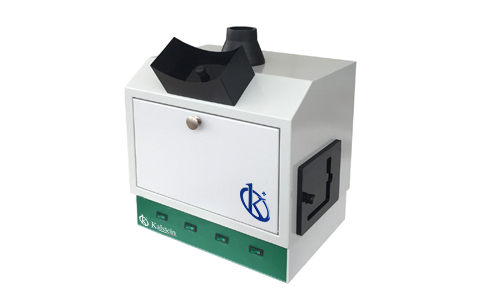The fields of biotechnology and genetics have witnessed a revolutionary transformation in recent decades. Scientific advances in these areas have enabled the development of various tools and equipment that have paved the way for new discoveries and research.
One such piece of equipment is the gel transilluminator, a device that has evolved significantly to become an essential tool in any modern research laboratory. Indeed, the gel transilluminator, from its humble beginnings, has evolved to become an indispensable tool in the world of science.
History and evolution of gel transilluminators
Transilluminators were first conceived in the 1970s, and since then they have continued to evolve. Early versions were complicated and bulky devices with limited efficiency and high power consumption. However, with the emergence of new technology and a better understanding of genetic sciences, transilluminators for gels also began to change.
The most significant advance in transilluminator development was the introduction of ultraviolet (UV) light for DNA visualization. This transformed the efficiency of these machines, allowing researchers to see bands of DNA more clearly and with better contrast than ever before. Recently, blue light transilluminators have been introduced as a safer alternative due to the risks associated with UV light.
Practical uses of the transilluminator
The transilluminator is an essential tool for any laboratory working with nucleic acids. It is most often used in gel electrophoresis experiments, a common method for the separation and analysis of DNA, RNA and proteins. As nucleic acids or proteins migrate through the gel, ultraviolet or blue light from the transilluminator illuminates the samples.
The value of transilluminators is not limited to gel electrophoresis. They are also valuable for visualizing and photographing fluorochrome-labeled samples, which facilitates interpretation of experimental results. Modern gel transilluminators are also useful in molecular cloning procedures. In this technique, researchers can excite and visualize stained nucleic acids to determine precisely where to cut the gel to isolate a specific DNA fragment.
Importance of the transilluminator in modern bioscience
The transilluminator is now an indispensable tool in any modern research laboratory. Its evolution has enabled more precise and safer experiments, in turn propelling genetic and biological research to new heights. Advances in transilluminator technology have contributed significantly to a wide range of medical, forensic and environmental research.
From genetic sequencing to biological analysis, these devices have enabled scientists to obtain high-quality data with unprecedented efficiency. As science and technology continue to advance, we expect to see even more improvements in gel transilluminator capabilities. With equipment like this available to scientists, we expect to witness amazing discoveries that will propel scientific research to new heights.
The future of gel transilluminators
As a manufacturer of laboratory equipment, we at Kalstein are pleased to offer you high-end products, with updated design and advanced technology; learn about our transilluminators HERE, you will find the YR models that are available for purchase, we also have a new 3D platform that has unlimited versatility, present in more than thirty countries worldwide, publish with us without language restrictions, with shipping plans, be seen, you are more.

